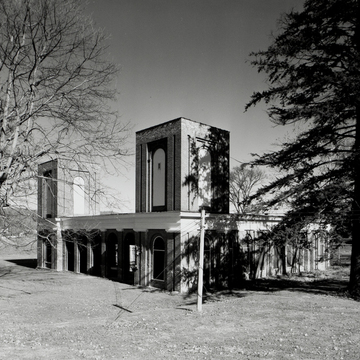Just what the architect, probably Henry Exall from Richmond, had in mind here is not easily discernible; the effect, as noted, could be described as either ecclesiastical or militaristic. Twin brick towers with tall blind arches stand at attention, acting as architectural sentinels at each end of the façade, flanking an open brick arcade that fronts the pool. Similar arcades filled with louvered fenestration march along each side. The windows on these side walls originally lit dressing rooms within, but the frame partitions that formed them were removed in 1997. Inside, the pool occupies a hollow, unroofed square and was divided into two 60-by-30-foot sections, for women (to the right facing from the hotel) and men.
In 1857 Exall advertised in the Richmond Whig that he would “pay particular attention to laying out and improving springs properties and other watering places,” and listed “Andrew Beirne, Union,” and the “Proprietors of the Sweet Springs” among his references. (Andrew and Oliver Beirne were brothers.) As this advertisement coincides with the addition of the bathhouse and other buildings at Sweet Springs, it seems more than likely that Exall designed them. Originally the bathhouse may have looked even more like either a church or a castle than it does now. When completed, the towers, which contained apartments for bath attendants in their upper levels, were topped with crenellated parapets or battlements.

